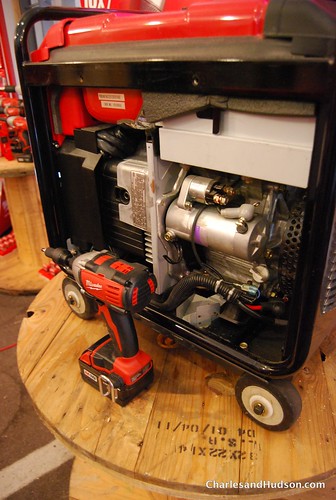It's Spring and time for you to put in that deck you have all the time wanted! You have all things you need until you enter the garage, reach for you beloved power tool and find that your cord is cracked. Maybe your power tool is fine, but when cutting the wood, you cut straight through your cord.
 Power Tools
Power Tools
Or one of the most frustrating things that can happen; your cord looks fine, but your power tool naturally will not work. Try replacing the cord before you replace the tool! A multimeter or continuity tester will let you know if your cord is conducting electricity to your power tool.

All is not lost and you most likely do not need to buy a new power tool. Replacing that cord will only take about an hour and you will save a ton of money. Using a damaged cord is Not Safe. Transfer may also save you from pain, fire, and death.
The tools you need to replace the cord to your power tool are: Screwdriver Utility Knife Wire Strippers Lineman's pinchers Multimeter or Continuity Tester
The materials you need to replace the cord to your power tool are: The accurate Transfer cord Masking tape
Always remember to Unplug your power tool prior to doing Any repair.
Repairs need to be done on a clean surface. Now that you have a Transfer cord, the last thing you want are foreign objects clogging the parts of your power tool.
Steps to Replacing Your Power Tool Cord: locate the wire terminals: The cord for most power tools connects directly to the tool switch straight through a wire terminal. Most switches are settled in the deal with of the tool.
First take off the plate to the tool to expose the inside of the tool.
You may have to take off more than one plate (for example on many tools, you may also have to take off the handle)
Disconnect the wires from the terminals: Loosen the wire final screws with a small screwdriver and pull the wires out of the terminal. At this point, it is very prominent to note the route that the wires corollary out of the final to connect to the plug. You need to route the new wires back in the same way or you may pinch the wires when you replace the handle.
Once the wire terminals are loose, mark each wire with masking tape to ensure that the accurate wires will be related with the new cord.
Cords with three pronged plugs regularly have three wires and cords with two prongs regularly have two wires.
Hint: If you are also replacing the tool switch, many new switches wish a distinct wiring pattern from the old one. See the manufacturers wiring diagrams for help with this.
Taking out the old cord: Most tools have a retaining bracket that keeps the power cord acquire and fastened in place. take off the retaining bracket (most need to be unscrewed) and take off the old cord. The old cord will have the wires shop with masking tape, so keep it colse to to help with positioning the new wires.
Installing the new cord: Power cords are distinct for many types of models, based on the amperage and the voltage or the model (even the length of the cord is important). Make sure to buy the right Transfer cord for the right tool. If the new cord already has the wires stripped, you are ready to setup it in directly.
Stripping the Wires: If not you must strip the wires first. First, take a knife and cut the power cord jacket six inches, but be faithful not to cut or damage the wires inside the jacket. The jacket is the flexible protective outside that surrounds the inner wires in the cord. Part the new cord against the old one to make sure that the wire length is the same for the new cord. Use a pair of wire strippers to strip ½ inch of the insulation away from the wire.
If you do not have wire strippers, be sure to buy some, or borrow them from a friend. Avoid the temptation to just strip the wires with a knife, because that will often damage the wires and lessen the power that goes to the motor. Twist the wires determined with lineman's pinchers to make the best relationship to the wire terminals
Put in the New Transfer Cord: Check the masking tape labels on the old cord, to make sure that the wires are related correctly. Place the wires in the accurate path to avoid pinching the wires when the tool case in put back in place. acquire the power cord back in place with the retaining bracket.
Replace the protection cover: You are just about finished! Replace the protection cover of the tool. Again, be sure that all of the wires are routed in the same path as they were originally. Failure to do so may corollary in a pinched wire, which could decrease the life of the tool, and even cause harm.
Check the Tool for Safety: The last step is to make sure that the tool is safe to use. A bad electrical relationship can pass electrical current straight through the metal housing of the tool - this is a serious danger for operation. A multitester is the best way to ensure that the tool is safe. A multitester measures the resistance and current in electrical circuits. With the multitester set to Rx1 put one end to the plug and the other end to the outside housing of the tool. There should be no relationship between the two.
Replacing Bad, Cut, Or Damaged Power Cords on Your Power Tools
No comments:
Post a Comment